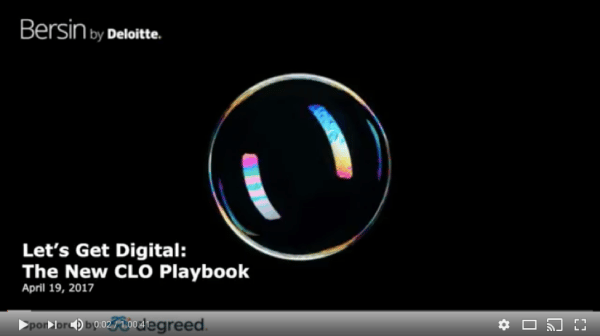As much as we would like to believe it, and as nice as it sounds, we don’t develop our people out of the goodness of our own hearts. Businesses have important goals and a bottom line, and in order to hit those goals, they need to make money. And if they don’t, shareholders, customers, and employees are all unhappy because the business will likely fail.
It might come as a surprise, but employee engagement is nearly as important as the bottom line. Research from Gallup ties engaged employees to better customer ratings, productivity, sales, and higher profitability. These organizations also saw significantly less turnover, shrinkage and absenteeism and quality defects.
But only 13% of employees worldwide are engaged at work.
Enlightened CLOs, like Sarice Plate of Xilinx and Susie McNamara of General Mills, focus on both the development of skills needed to get the job done as well as engaging employees. “When employees are excited to learn, they feel more empowered, engaged and productive, and they become more valuable to the business,” said Sarice Plate, Head of Global Talent Aquisition at Xilinx, at a recent Bersin by Deloitte and Degreed-sponsored webinar.
But meeting both short-term needs for performance as well as the long-term needs for development requires thinking about things differently, and creating a new learning strategy – one that’s centered around the learner.
“The first and most important thing is that we are anchoring our talent development strategy to the same strategy we use as a company for everything we do, which is called consumer first,” shared Susie McNamara, Talent Development Leader of General Mills. “So everything that we’re doing, whether we’re trying to meet their short-term needs to ensure that they’re successful in their current role or whether we’re thinking more longer term and ensuring that their development needs more broadly, has the consumer at the center of everything.”
“In re-thinking our strategy, we decided we needed to create an environment that empowered our employees to drive their own development and their careers in a more effective way,” added Plate. “Our learning environment is now learner driven, where employees are able to identify pathways and specific personal development needs, they can consume learning in that timely fashion that best meets their learning style.”
What does putting the learner at the center mean for your software and tools? It means utilizing systems that support natural human behavior like collaboration, ease of use and personal accountability.
“We wanted to inspire our learners and we want our learners to inspire others. So are allowing learners to start learning groups, to share, to collaborate. But we also needed learners to feel more aligned around our competencies with access to understanding how they can grow those competencies and make connections.”
In both cases, these leaders put learners in the driver’s seat. Want to know more about the Xilinx and General Mills learning strategies? Check out the on-demand webinar, “Let’s Get Digital,” now.

